For organic regenerative agriculture, fair trade,
social justice, sustainable living and sustainable production
Ranch news
EDUCATIONAL RANCH VIA ORGÁNICA
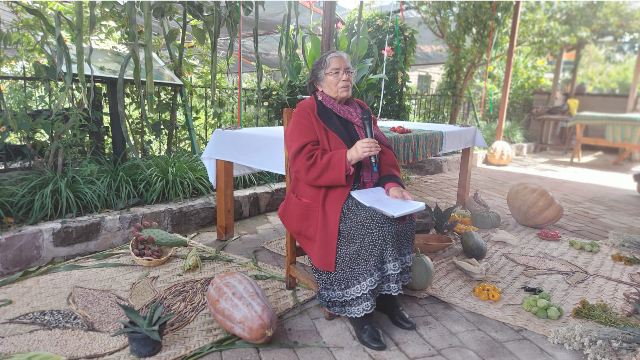
Commemorating the International Day of Rural Women and their role in food, it is important to remember the work of the women who collaborate in the project:
The team of women that work and create Vía Orgánica are distributed along most of the areas of the ranch: regenerative farm, care of sheep and goats, apiary management, reforestation, seed care, food production, food preparation, customer service, education, finances, social media, administration and maintenance. Their hard work is essential for the operation of the ranch, each one of them being fundamental pieces to make Vía Orgánica work. Demonstrating that field work can be and, in many cases, is directed by women, even if the opposite is thought.
The women who work inside the ranch are only a small part of the great number of women who work and achieve wonderful things from their own spaces, being providers of food with love and strength.
Choose your plan!
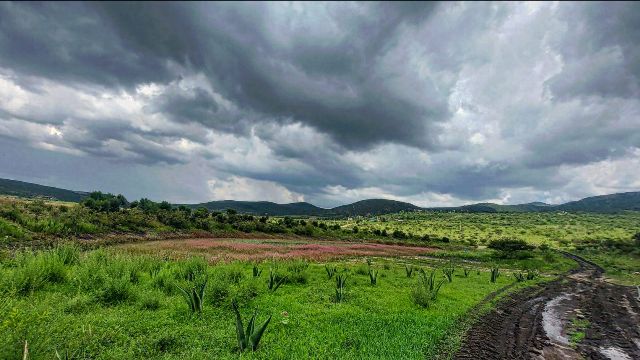
Visit the ranch and discover the trails to the mountain. Did you know that upon arrival you can rent a bicycle and ride on the ranch? You can also have picnics in one of our rest areas with incredible views and explosive vegetation that you can still see in October. Treat yourself to an adventure ride, if you wish you can stay in a thermal adobe cabin or simply eat a dish made with fresh ingredients from our garden at the restaurant.
In October, come and harvest your own pumpkin from the milpa and cook it as you like, in a rich pumpkin cream, in a delicious cake or pie.
Come as a family, ask about our packages and book your visit!
Billion Agave Project
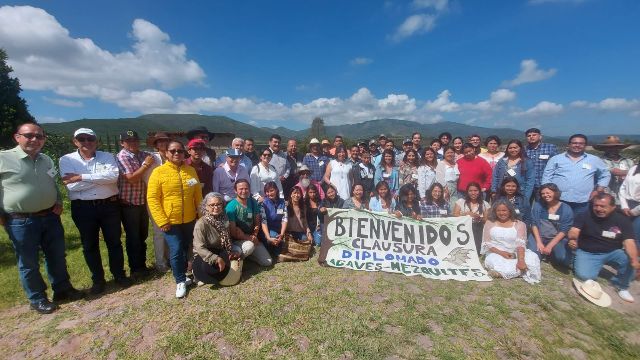
Since the Billion Agave Project was created, one of the objectives was, to create a course called “Agaves and Mesquite: Regenerating semi-arid land”. This diploma course was seen since the beginning, as a tool to spread and motivate the regeneration of the landscape with these two crops. It was designed a year ago in collaboration with the University of Guanajuato. The scope of this course was 60 people from all over Mexico and Ecuador, where 50% were women. It was attended by activists, students, producers and environmentalists determined to recover properties, mountains, hillsides, communities or colonies and to contribute to generating change with actions. The diploma course had more than 15 speakers: researchers, committed teachers from different instances such as the University of Chapingo, UNAM, University of Guanajuato, INIFAP, and others.
The agaves and mesquites have been the perfect pretext to unite, make a community, listen, connect, add, sow curiosity, will and impetus in each of the participants. And with their way of being, strong and resilient, giving more than they take, they give us a life lesson, we just need to understand it.
Seasonal Crop
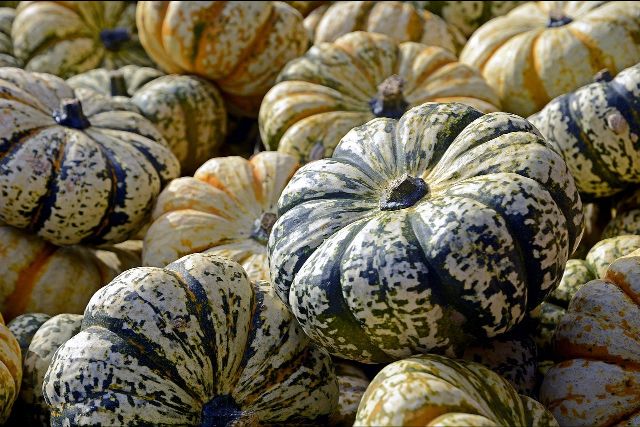
Autumn has begun and it is the perfect time to raise some seasonal crops, the milpa is forming the fruits that come from there, such as the pumpkins that are at their maximum growth and mature and can be stored for months. The bean pods along with the cobs, broad beans and everything that the milpa gave us. Let’s not forget the delicious seasonal honey.
We advice to consume according to the season, take advantage of the gifts that nature gives us full of colors and varied flavors.
Do It Yourself
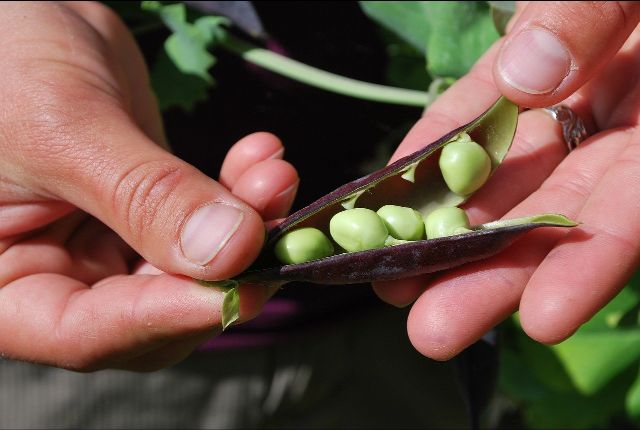
Arriving October the temperatures drop down during the nights and sunrises. If you started your garden at the beginning of the year, it probably now has brown and yellow colors, which indicate that your crops are physiologically mature, that is, they are in their reproductive stage and surely full of seeds. If this is your case, we recommend to do the following:
1.- Harvest some flower or fruit seeds that may have formed and store them for the next heat cycle.
2.- If you have any empty space to cultivate, we recommend to recover fertility in the soil with donor crops (legumes) and some cereal such as wheat or barley that will be sown and integrated into the soil when it has 10% flowering to increase organic matter, fertility, microbiological life and symbiotic activity in it. This will also allow you to give your planter a break and prepare it for the next cycle.
3.- Plant your mix of salad leaves such as lettuce and spinach, which grow well on cold days.
4.- Take the time to monitor your plants, check which ones grew better, and write down which ones called the insects, and which crops grew more difficult and easier. It is important that you take note, you will learn from each cycle.
Come and Visit
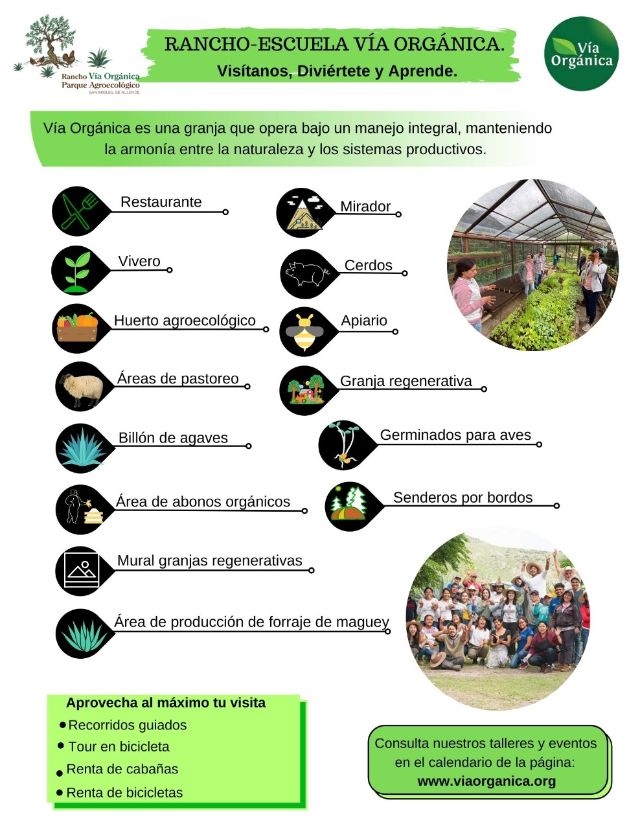
October Activities
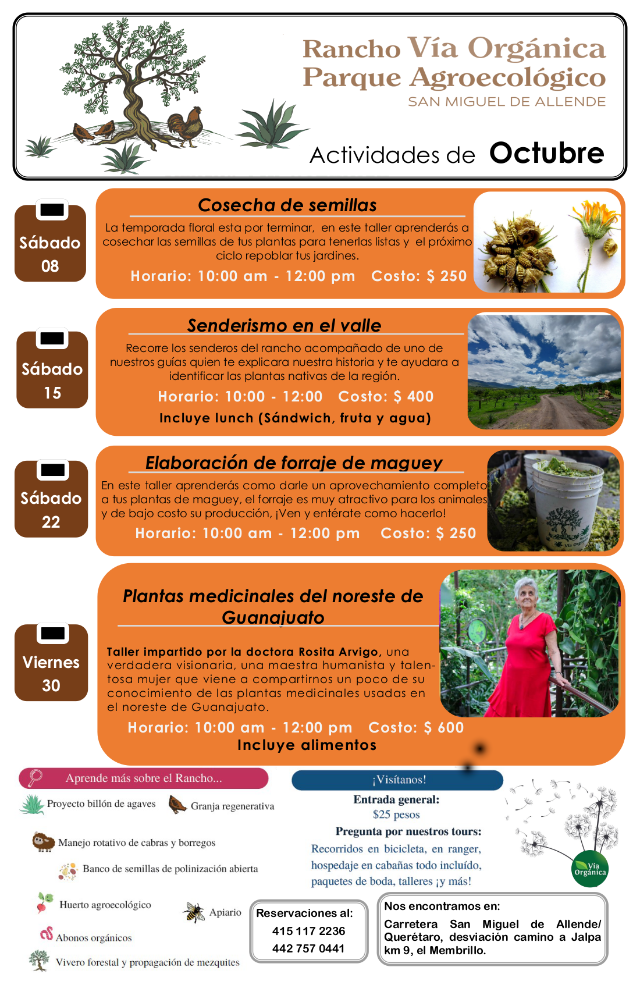
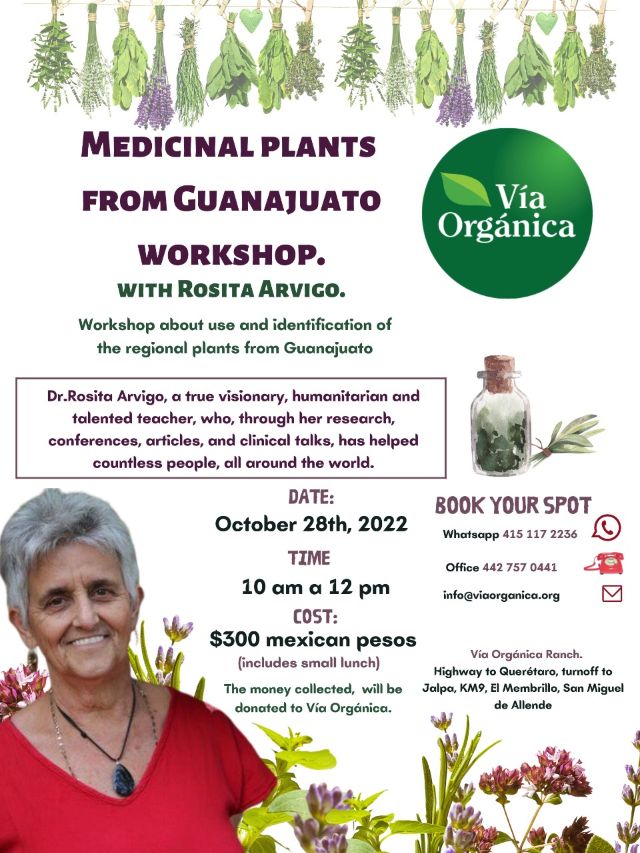
November Activities
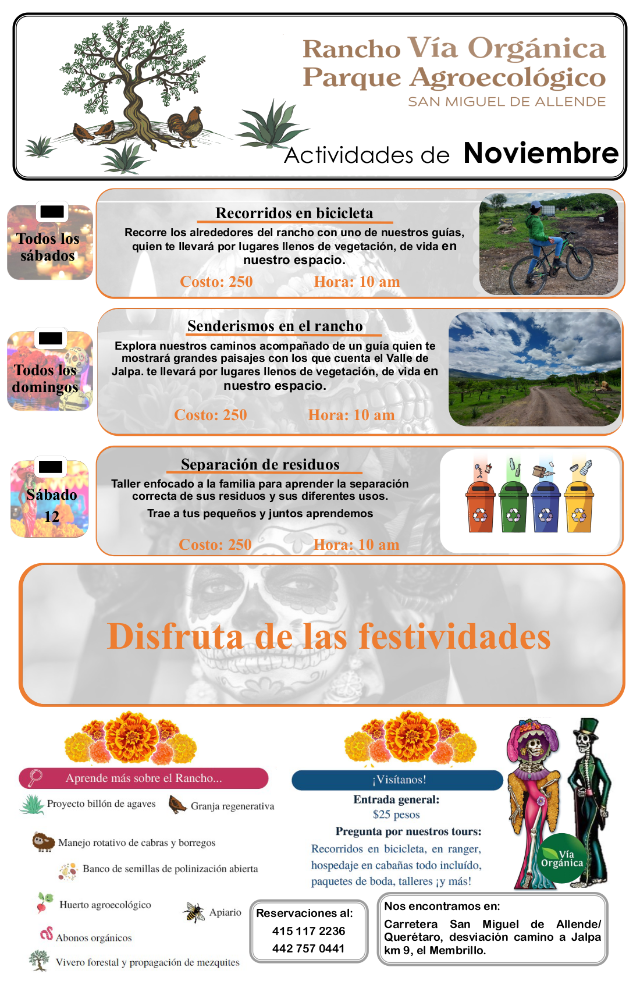
DON’T FORGET TO VISIT US!
Remember that we are open from 8 am to 6 pm
Carretera México/ Querétaro, deviation on the way to Jalpa, km 9
Agroecological Park Vía Orgánica.
For information on our products, seeds and harvest,
call our store at 442 757 0490.
Every Saturday and Sunday nixtamalized tortilla with Creole and local corn!
Enjoy our sweet and sour kale chips for children and not so children!
FOLLOW US!
 FACEBOOK
FACEBOOK  TWITTER
TWITTER  INSTAGRAM
INSTAGRAM
SHARE THIS NEWSLETTER!
 Share
Share  Tweet
Tweet  Forward
Forward









